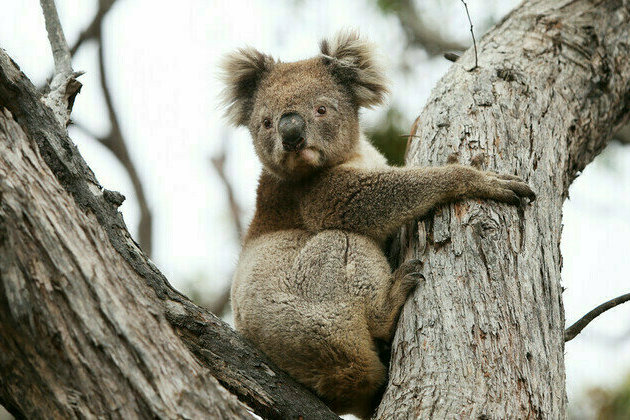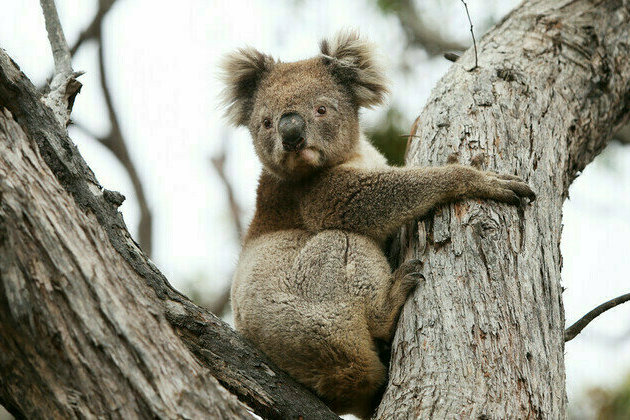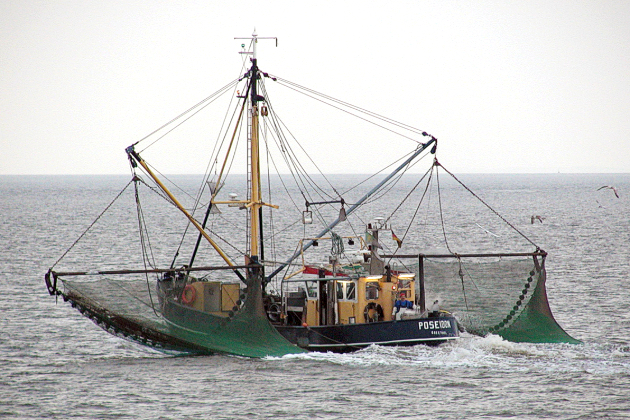Fossil teeth show extinct giant kangaroos spent their lives close to home - and perished when the climate changed
The Conversation
23 Apr 2025, 20:08 GMT+10

Large kangaroos today roam long distances across the outback, often surviving droughts by moving in mobs to find new food when pickings are slim.
But not all kangaroos have been this way. In new research published today in PLOS One, we found giant kangaroos that once lived in eastern Australia were far less mobile, making them vulnerable to changes in local environmental conditions.
We discovered fossilised teeth of the now extinct giant kangaroo genus Protemnodon at Mount Etna Caves, north of Rockhampton, in central eastern Queensland. Analysing the teeth gave us a glimpse into the past movements of these extinct giants, hundreds of thousands of years ago.
Our results show Protemnodon did not forage across great distances, instead living in a lush and stable rainforest utopia. However, this utopia began to decline when the climate became drier with more pronounced seasons - spelling doom for Mount Etna's giant roos.
The Mount Etna Caves National Park and nearby Capricorn Caves hold remarkable records of life over hundreds of thousands of years.
Fossils accumulated in the caves because they acted like giant pitfall traps and also lairs of predators such as thylacines, Tasmanian devils, marsupial lions, owls, raptors and the now-endangered ghost bats.
Large parts of the region were once mined for lime and cement. One of us (Hocknull) worked closely with mine managers to safely remove and stockpile fossil deposits from now-destroyed caves for scientific research which still continues.
As part of our study we dated fossils using an approach called uranium-series dating, and the sediment around them with a different technique called luminescence dating.
Our results suggest the giant kangaroos lived around the caves from at least 500,000 years ago to about 280,000 years ago. After this they disappeared from the Mount Etna fossil record.
At the time, Mount Etna hosted a rich rainforest habitat, comparable to modern day New Guinea. As the climate became drier between 280,000 and 205,000 years ago, rainforest-dwelling species including Protemnodon vanished from the area, replaced by those adapted to a dry, arid environment.
Our study looked at how far Protemnodon travelled to find food. The general trend in mammals is that bigger creatures range farther. This trend holds for modern kangaroos, so we expected giant extinct kangaroos like Protemnodon would also have had large ranges.
Teeth record a chemical signature of the food you eat. By looking at different isotopes of the element strontium in tooth enamel, we can study the foraging ranges of extinct animals.
Varying abundances of strontium isotopes reflect the chemical fingerprint of the plants an animal ate, as well as the geology and soils where the plant grew. By matching chemical signatures in the teeth to local signatures in the environment, we could estimate where these ancient animals travelled to obtain food.
Our results showed Protemnodon from Mount Etna didn't travel far beyond the local limestone in which the caves and fossils were found. This is much a smaller range than we predicted range based on their body mass.
We think the small foraging range of Protemnodon at Mount Etna was an adaptation to millions of years of stable food supply in the rainforest. They likely had little need to travel to find food.
Fossil evidence also suggests some species of Protemnodon walked on all fours rather than hopped. This would have constrained their ability to travel great distances, but is a great strategy for living in rainforests.
One question remains to be answered: if they didn't need to move far to find food, why did they grow so big in the first place?
The extinction of Australia's megafauna - long-vanished beasts such the "marsupial lion" Thylacoleo and the three-tonne Diprotodon - has long been debated. It has often been assumed that megafauna species responded in the same way to environmental changes wherever they lived.
However, we may have underestimated the role of local adaptations. This particularly holds true for Protemnodon, with a recent study suggesting significant variation in diet and movement across different environments.
Similar small foraging ranges have been suggested for Protemnodon that lived near Bingara and Wellington Caves, New South Wales. Perhaps it was common for Protemnodon populations in stable habitats across eastern Australia to be homebodies - and this may have proved their Achilles' heel when environmental conditions changed.
As a rule, creatures with a small home range have a limited ability to move elsewhere. So if the something happens to their local habitat, they may be in big trouble.
At Mount Etna, Protemnodon thrived for hundreds of thousands of years in the stable rainforest environment. But as the environment became more arid, and resources increasingly patchy, they may have been unable to traverse the growing gaps between patches of forest or retreat elsewhere.
One key result of our study is that Protodemnon was locally extinct at Mt Etna long before humans turned up, which rules out human influence.
The techniques used in this study will help us to learn about how Australia's megafauna responded to changing environments in more detail. This approach moves the Australian megafauna extinction debate away from the traditional continental catch-all hypotheses - instead we can look at local populations in specific sites, and understand the unique factors driving local extinction events.
 Share
Share
 Tweet
Tweet
 Share
Share
 Flip
Flip
 Email
Email
Watch latest videos
Subscribe and Follow
Get a daily dose of Brisbane Star news through our daily email, its complimentary and keeps you fully up to date with world and business news as well.
News RELEASES
Publish news of your business, community or sports group, personnel appointments, major event and more by submitting a news release to Brisbane Star.
More InformationAustralia
Section"Those responsible must be held to account": Australia Prime Minister Anthony Albanese on Pahalgam terror attack
New Delhi [India], April 23 (ANI): Australia stands with India at this 'difficult time,' Prime Minister Anthony Albanese said on Wednesday,...
Australian authorities face backlash over koala cull
Nearly 700 koalas have been killed from helicopters in a national park in Victoria in a wildlife cull Australian authorities are...
700 koalas killed in helicopter sniper operation
Australian authorities are facing a backlash following the cull in a national park in Victoria state Australian authorities are under...
Fossil teeth show extinct giant kangaroos spent their lives close to home - and perished when the climate changed
Large kangaroos today roam long distances across the outback, often surviving droughts by moving in mobs to find new food when pickings...
"He should've carried his bat and finished the game, like KL Rahul did": Ambati Rayudu on DC batter Abhishek Porel's innings against LSG
New Delhi [India], April 23 (ANI): Former Indian cricketer Ambati Rayudu acknowledged Delhi Capitals (DC) batter Abhishek Porel's good...
Former Australia opener Keith Stackpole passes away at 84
New Delhi [India], April 23 (ANI): Former Australia opener Keith Stackpole, who played in 43 Tests and scored seven centuries, has...
International
SectionUS to restrict visas for 250 Nicaraguan officials
WASHINGTON, D.C.: The United States will limit visas for more than 250 officials from Nicaragua, U.S. Secretary of State Marco Rubio...
Measles outbreak confirmed in Michigan's Montcalm County
LANSING, Michigan: The Health Department in Michigan confirmed a measles outbreak in Montcalm County this week, marking the first such...
US Supreme Court to review trump birthright citizenship move
WASHINGTON, D.C. The U.S. Supreme Court will hear arguments on May 15 about President Donald Trump's attempt to restrict automatic...
Trump signs order to ease seafood industry rules
WASHINGTON, D.C.: President Donald Trump has signed an executive order directing the U.S. Commerce Department to ease regulations on...
World mourns loss of Pope Francis, dead at 88
THE VATICAN - The world is in shock and mourning on Easter Monday as it woke to the news that Pope Francis had died. Having recently...
Ex NYC police officer sentenced for illegal work tied to China
NEW YORK CITY, New York: A former New York City police sergeant, Michael McMahon, was sentenced this week to 1.5 years in prison. He...












